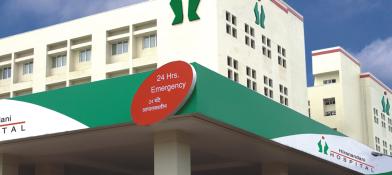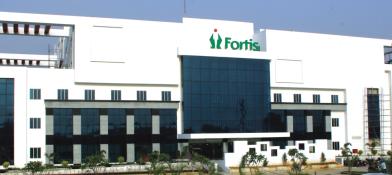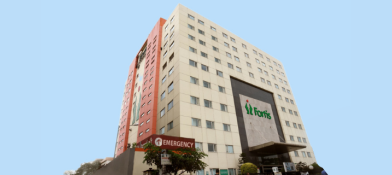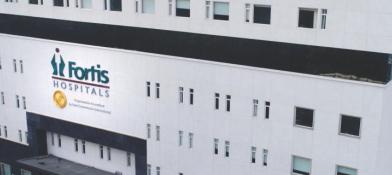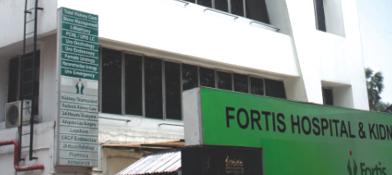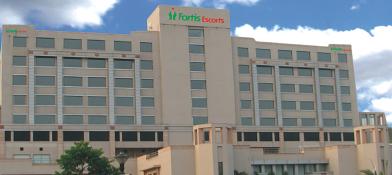Canalith repositioning procedure
CRP, also known as the Epley maneuver, is a non-invasive technique used to treat BPPV, the most common type of vertigo. This condition develops when calcium carbonate crystals (called canaliths) become dislodged and migrate to the semicircular canals in the inner ear, causing dizziness and nausea. Canaliths are naturally present in the utricle of the inner ear and help create a sense of balance and orientation. With CRP, these crystals are moved back to their normal position to restore balance and reduce dizziness.
About BPPV
BPPV develops when the canaliths shift from the utricle into one of the semicircular canals, usually the posterior canal, of the inner ear. The utricle is a fluid-filled sac-like structure that contains calcium carbonate crystals and sensory cells that keep the body balanced. However, when the canaliths move out of their position within the fluid, they stimulate the cupula, a sensory structure that detects head motion and position. This abnormal stimulation of the balance receptors in the ear sends erratic signals to the brain about the body’s position and balance, resulting in vertigo attacks. The intense dizziness spells are often triggered by simple position changes, such as looking up, bending over, or rolling in bed.
These episodes occur unpredictably, with vertigo spells lasting less than a minute. BPPV is often a result of head injuries, ear disorders that displace the canaliths, or age-related degeneration.
Key symptoms of BPPV include:
- Sudden dizziness and loss of balance when moving into certain positions
- A spinning sensation with nausea
- Vertigo and nausea subsiding after 30 seconds to 1 minute
- Loss of balance and falling during attacks
- Residual light-headedness or imbalance between acute vertigo attacks
Understanding CRP
As the name implies, CRP is performed to reposition the displaced canaliths in the inner ear. The vertigo symptoms are resolved when the balancing crystals are replaced in the utricle chamber. CRP consists of simple, controlled, and methodical head movements and position changes to move the canalith crystals out of the semicircular canals. Adjusting the position allows gravity to make the floating crystals move out of the semicircular canal and return them into the utricle chamber.
The maneuver is performed by a doctor or therapist at their office. The patient usually lays down on an exam table that can be adjusted into vertical and horizontal positions. The appointment takes 15–20 minutes. In this procedure, the patient is made to hold a few positions for about 30 seconds each or until symptoms stop and an extra 30 seconds after the symptoms have ended. The steps of the procedure are as follows:
- The patient is moved from a sitting to a reclining position. The patient turns the head to the affected side by 45 degrees. The doctor assists them in holding their head over the table’s edge at a slight angle.
- The doctor then turns the head slowly to the opposite side by about 90 degrees.
- The patient rolls onto their side with their head slightly angled while looking down at the floor.
- The patient is then helped carefully to a sitting position with head centered and tilted down. They remain in this position for about 15 minutes.
The doctor monitors the patient’s eyes throughout the procedure for irregular movements. The whole procedure may be repeated three or more times within a treatment session.
After one or two sessions, nearly 80% of the patients get relief from vertigo.
What to expect during the procedure?
The doctor will explain each position before moving the patient and supporting them when moving. However, you need to remember the following:
- One may experience brief vertigo episodes as crystals shift through the canals
- Potential nausea from stimulation of balance receptors may also occur
- The procedure is repeated multiple times for effectiveness
- An upright position should be maintained after the procedure to stabilize the repositioned crystals
- Post-procedure restrictions on head movements ensure long-lasting reduction of vertigo symptoms
The procedure is non-invasive, external, and does not involve any medication. While the patients are advised to move with caution after the procedure, they can resume normal activities. Follow-ups are required to monitor their symptoms. When performed correctly by a trained specialist, the CRP provides most patients relief from BPPV safely and effectively. However, if symptoms recur, consult the doctor for re-evaluation without delay.
The pros and cons of the procedure
- It requires precise adjusting of the head positions
- Symptoms may persist or recur if crystals re-enter the canal
- Some patients may need multiple sessions
- Following post-treatment instructions precisely is imperative
- The procedure will not resolve non-BPPV causes of vertigo
Benefits of the procedure
- It is a quick and non-invasive procedure that does not require surgery or medicines
- Many insurance providers cover CRP
- Vertigo symptoms reduce significantly and rapidly. Balance also returns quickly
- Very few complications
- Usually, the treatment course is complete within one to two clinic visits
Risks
Although rare, CPR may have certain risks, such as:
- It can result in neck or back injury if not performed correctly.
- Sometimes, particles can move to a different place instead of utricle and continue to cause vertigo.
- Other side effects, such as nausea, dizziness, and light-headedness, can also occur.
FAQs
- How much does a CRP cost?
Between Rs. 1,000 and 3,000, and it is covered by insurance
- Is the procedure painful?
No. While the movement of the crystals may cause brief dizziness and nausea, no pain is involved with the head positioning. Inform your doctor if you feel any discomfort.
- How soon will the vertigo symptoms reduce?
Most people experience relief from vertigo immediately after the procedure. Some symptoms may recur as the crystals fully settle, but they subside rapidly.
- Does the procedure work for other causes of vertigo?
The Epley procedure is effective specifically for BPPV arising from loose particles in the inner ear canals. Other vertigo causes, like Meniere’s disease or stroke, require other treatment approaches.








